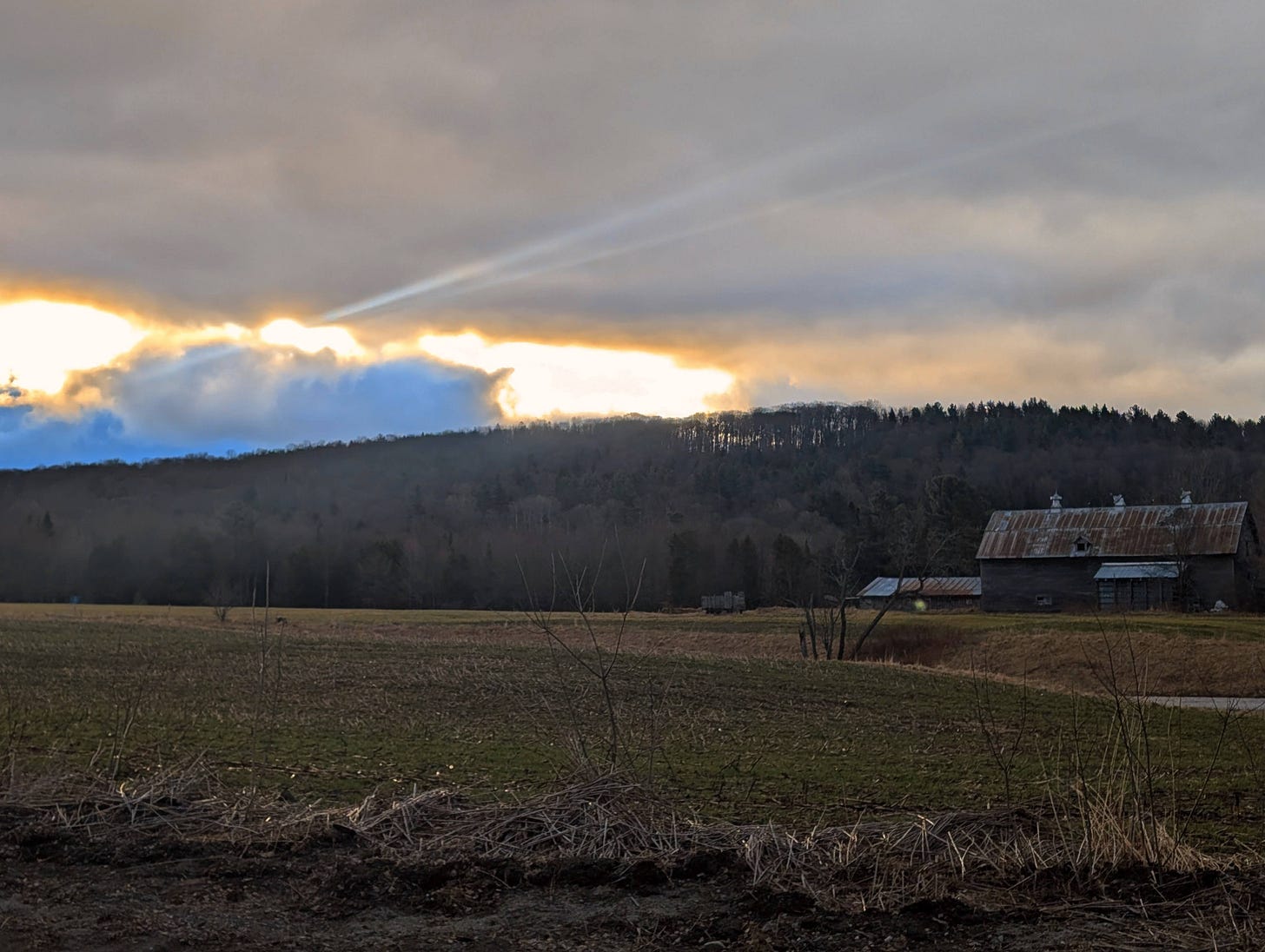The Way, the Truth, and the Life
Easter Sunday
Early on the first day of the week, while it was still dark, Mary Magdalene came to the tomb and saw that the stone had been removed from the tomb. So she ran and went to Simon Peter and the other disciple, the one whom Jesus loved, and said to them, “They have taken the Lord out of the tomb, and we do not know where they have laid him.” Then Peter and the other disciple set out and went toward the tomb. The two were running together, but the other disciple outran Peter and reached the tomb first. He bent down to look in and saw the linen wrappings lying there, but he did not go in. Then Simon Peter came, following him, and went into the tomb. He saw the linen wrappings lying there, and the cloth that had been on Jesus’s head, not lying with the linen wrappings but rolled up in a place by itself. Then the other disciple, who reached the tomb first, also went in, and he saw and believed, for as yet they did not understand the scripture, that he must rise from the dead. Then the disciples returned to their homes.
But Mary stood weeping outside the tomb. As she wept, she bent over to look into the tomb, and she saw two angels in white sitting where the body of Jesus had been lying, one at the head and the other at the feet. They said to her, “Woman, why are you weeping?” She said to them, “They have taken away my Lord, and I do not know where they have laid him.” When she had said this, she turned around and saw Jesus standing there, but she did not know that it was Jesus. Jesus said to her, “Woman, why are you weeping? Whom are you looking for?” Supposing him to be the gardener, she said to him, “Sir, if you have carried him away, tell me where you have laid him, and I will take him away.” Jesus said to her, “Mary!” She turned and said to him in Hebrew, “Rabbouni!” (which means Teacher). Jesus said to her, “Do not touch me, because I have not yet ascended to the Father. But go to my brothers and say to them, ‘I am ascending to my Father and your Father, to my God and your God.’ ” Mary Magdalene went and announced to the disciples, “I have seen the Lord,” and she told them that he had said these things to her.
John 20:1-18
I know lots of people in church this morning are wrestling with God or don’t know what to make of all this.
And you maybe don't know what to make of people who go to church who do seem to know what to make of it (nobody tell them that we are also figuring that out every week too).
That Easter morning, they didn't know what to make of it either. After the tears, the confusion, the pain, came the joy when the first evangelist Mary Magdalene said the very basic, true news: “I have seen the Lord!” Every preacher from the dawn of time is just an echo of that sound. Speaking of, our country church got the choir back together for this Sunday, and I’m glad that for the first time in my career I can finally preach to the choir.
But I’m also glad we have the choir on this Easter morning because music is true; it just “is.” Vibrations of matter spaced out by time. By itself, it doesn’t even have meaning until you start assigning meaning to it. Some of my favorite music has no lyrics or intentionally meaningless lyrics,1 because sometimes we get into trouble when we force meaning onto the much simpler truth of music. And yet it is nonetheless powerful. We can sense that the truth of a beautiful song is getting at something more than just whatever lyrics it might have, it’s speaking down in the soul.
Let the hearer understand: if you don’t know what the resurrection means, that Easter morning, they didn’t know what this resurrection thing meant. They just knew it was true. They knew it was powerful. They knew it moved them to go running, dancing, and shouting once they really heard it and got the melody—Christ is risen.
I know many of us feel like it is as dark and a confusing time as ever. In such tims, sometimes the only thing that makes sense is to simply sing in the choir. Sometimes the best we can do is just boost the signal of truth by singing it together, even if thousands of years later, we still don’t fully know what that resurrection means. It’s music; it just is.
That morning, the disciples thought the music had stopped. After the cross, silence.
But the Music never stopped.2 In fact, for the first time that morning, the disciples actually really heard the music of Jesus Christ. And they didn’t know what it was. They just knew it was true: Christ is risen. And facing that reality, all they could do, all they wanted to do, was keep dancing, keep playing, keep sharing in that music.
According to John, Jesus called himself the Way, the Truth, and the Life, and in that order. But let's start with the Truth that some of us here might still wrestle with: did this really happen? Did he rise? I know some of us might find this hard to accept. It is irrational, even impossible according to how we understand science and history. It felt impossible to them back then, too. Peter didn’t believe it at first. The disciple John (who made it very clear that he outran Peter) didn’t know what to do with it, he just went home with his mind blown. Mary even thought Jesus was the gardener. And yet something in Jesus’ voice, the sound, the song of Jesus calling Mary by name made her finally hear the truth of his music. And the Music was alive.
As the apostles went out to spread the good news, from the start, a lot of people didn’t believe it—how could you? A man doesn’t just rise from the dead. Some of the theories are the same now as they were then: they stole the body, or they all spontaneously hallucinated, or they had a conspiracy to lie about it to spread a deeper, metaphorical truth. But people don’t die for a metaphor;3 try getting that many people willing to die for a comforting lie. But people do go to their death standing in the truth they know deep in their bones. And the apostles knew it was true that Jesus Christ had risen.
Something made these devout, Torah-observant Jews radically change their most fundamental practices despite still very much believing in the same God they always believed in. They weren’t “spiritual but not religious” or “God is an idea” people…these were very religious people! But something made them upend everything about their religion: how they ate, what they ate, how they worshiped on the Sabbath, how they viewed people with illnesses, how they treated their enemies, and more. If these followers of Jesus didn’t think Jesus was truly the Son of God who had risen from the dead, why would they risk the wrath of the God they devoutly believed in, going against everything they thought they knew about living in the favor of God? Because they believed a crazy, crazy truth: Jesus Christ was the risen Son of God. Everything had changed.
And so, from believing the Truth, they entered the Way, as the first Christians called themselves. What did that mean for them? What does it mean for us?
The way I hear it, entering the Way is like entering the Music. Sometims I think about all the music constantly happening all around the world at the same time, an incredible amount of music being played and listened to, a constant stream. The Way is like joining that ever-playing stream of music. When you follow Jesus Christ, you allow the music of his life and his truth to play you, the instrument. You let the music live in you.
The Way is neither lawlessness nor law obsession, neither “nothing suffices” or “anything goes,” neither dying by the Law or dying by our own hedonism in its false freedom. Rather, the Way is choosing Life, both here and eternal. Tyrants fear this because they know our natural fear is death, and their power reigns by wielding the threat of death explicitly and implicitly.4 In Jesus Christ, you have something the tyrants don’t have—they have lies, they have death, but in Jesus Christ, there is nothing to fear, for you have the Way, the Truth, and the eternal Life.
Eternal life isn't all about endless life, stretching on forever. It's a quality, a mode of life. It's tapping into the essence, the source and the force, the river and the stream of Life itself. It's aligning with the very power that breathes in all that lives, revealed in the truth of death and resurrection embodied in Jesus Christ.
And the beautiful, astounding Easter mystery beyond the resurrection is that music, that truth, that life, lives in you. As Colossians 1:27 says, “How great are the glorious riches of this mystery: which is Christ in you, the hope of glory.”
Christ said, “I'm here to live in you. Take me with you. I am the Way and the Truth and the Life, the fullness of life, the fulfillment of life.” He's not there in the tomb anymore. He's in you.
Music isn't just a metaphor, it's a reality: vibrations of matter, spaced in time, that resonate with truth. The resurrection of Jesus Christ is not a metaphor either, for he is the Way, the Truth, and Life itself.
Christ is risen. The Music is playing. And now the invitation is to go out and let the Music play you.
See Phish
See Grateful Dead
H/t to Bishop Barron’s sermons that emphasize this
H/t Tim Keller






